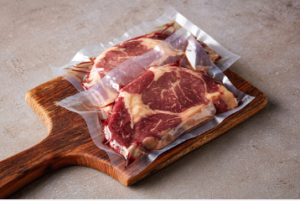Watch this video from Premier Handling Solutions for tips on running a safer warehouse.
Freezer spacers allow cold air to circulate correctly and speed up blast freezing times in food processing and meat storage facilities. For more pallet freezer spacers storage solutions, click here.
 Using freezer spacers in the food production industry also helps reduce disease outbreaks. They are easy to clean and sanitize, making them unlikely to harbour contaminants that could spread diseases between people or products.
Using freezer spacers in the food production industry also helps reduce disease outbreaks. They are easy to clean and sanitize, making them unlikely to harbour contaminants that could spread diseases between people or products.
Easy to Clean
Unlike solid plastic pallets and shelving, these freezer spacers allow air to circulate through the load. It facilitates faster cooling or freezing and saves energy. They also qualify for a more uniform distribution of temperatures throughout the load. It helps keep the food safe and sanitary.
They are also lightweight and nestable, making them economical to transport and store. They can withstand temperatures from -50°C to +90°C and can be used for blast freezer applications. They also have an open profile to ensure air contacts the stacked cartons and improve freezing efficiency. They are also reversible, which allows them to be placed back in the stack with either side up. That makes them an excellent choice for cold storage warehouses or shipping-related facilities exporting food products.
Easy to Nest
Some pallets and other storage products contain cracks and pores where microorganisms can hide and grow. These crevices are difficult to clean and sanitize, which can spread disease between workers or products. Plastic freezer spacers are easy to wash and resist the growth of microorganisms. They also allow air to circulate freely, reducing cooling times and blast freezing meat more quickly.
Freezer spacers are lightweight and nestable to take up less storage space than traditional wooden pallets. They are also 100% recyclable and can be repurposed once their useful life ends, cutting energy costs in your facility.
Durable
Premier freezer spacers are heavy-duty plastics that prevent impressions in fresh goods and help improve airflow between stacked layers of products. They are essential to any meat processing or cold warehouse facility and can cut energy costs and increase productivity. They also help reduce blast freezing times by up to 30% and speed up thawing processes.
Made of high-density polyethylene (HDPE) material, these pallet freezer spacers are easy to clean and resistant to harsh environments and temperature variations. They nest easily when not in use, reducing storage space and saving on warehouse storage fees.
Using plastic freezer spacers in your facilities helps ensure compliance with USDA food safety regulations and prevents contamination from reaching consumers. They also allow you to avoid costly violations and fines and protect your brand reputation. They can also safely transfer or exchange a load by tipping it onto the pallet or load table and removing or adding the freezer spacer dividers.
Recyclable
Freezer spacers help keep your freezer clean and prevent impressions in frozen goods. They also improve air circulation and stabilize stacked layers, keeping your product fresh for extended periods. The open lattice design of these heavy-duty plastic pallet spacers allows cold air to circulate evenly throughout a load.
The smooth surfaces of these food-grade freezer spacers make it easy to power wash, sanitize, and clean. They also resist mould and rots, making them much easier to maintain than wooden ones. In addition, they are lightweight compared to metal grating and nestable when not in use to save storage space.
Another benefit of freezer spacers is that they’re easier to handle than a stack of boxes, reducing worker injury and lowering labour costs. The smooth surfaces of these plastic spacers also make it difficult for bacteria and microorganisms to latch onto them, reducing the chances of food contamination that could reach the consumers. It is an important consideration for facilities that have to adhere to strict USDA standards in food production, processing, and distribution.